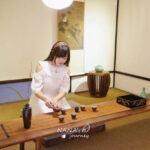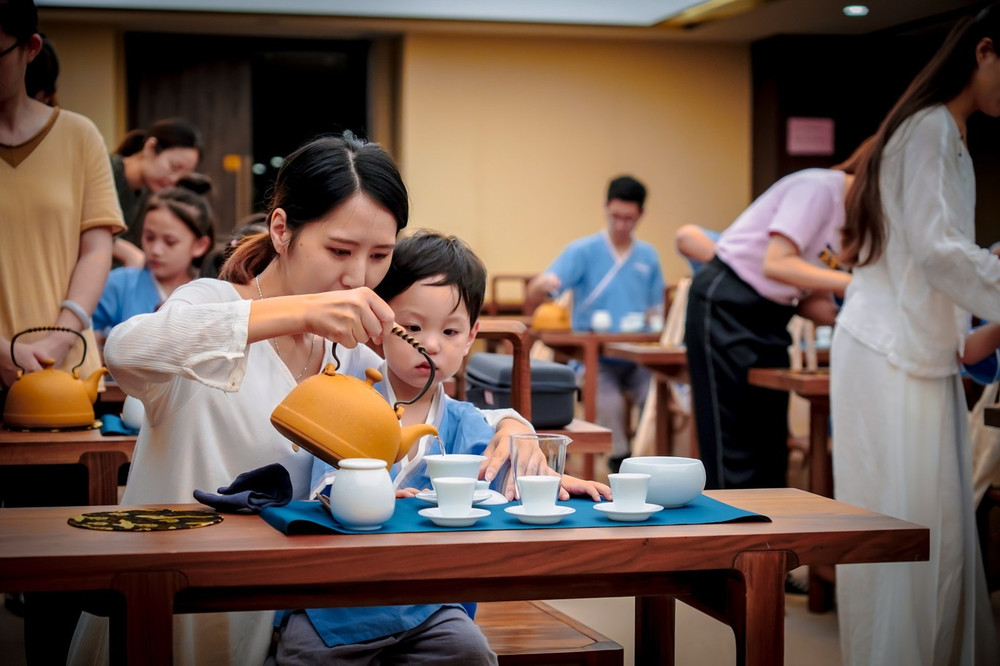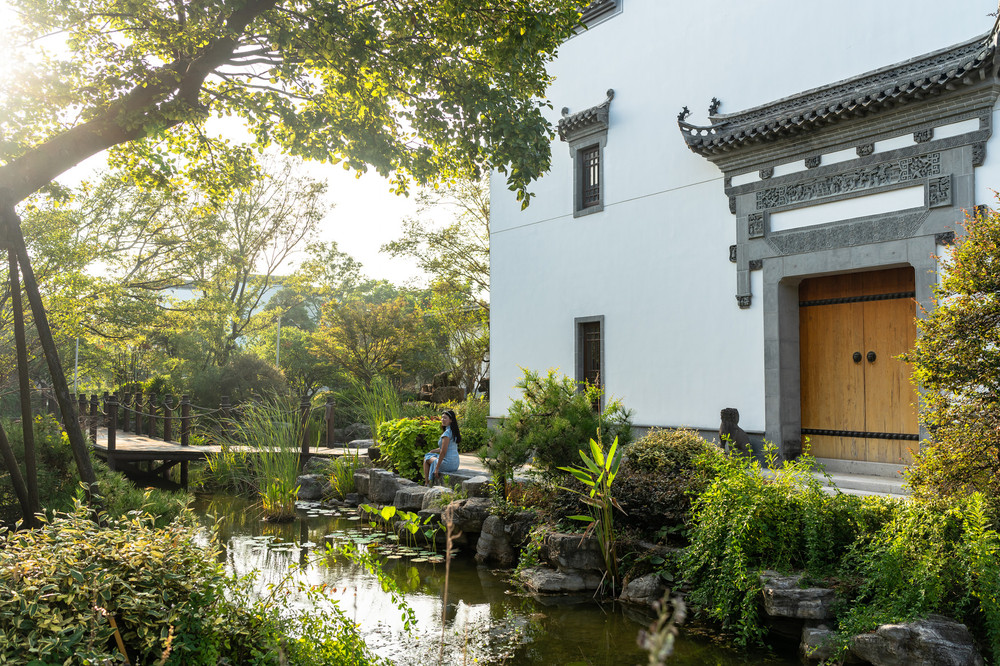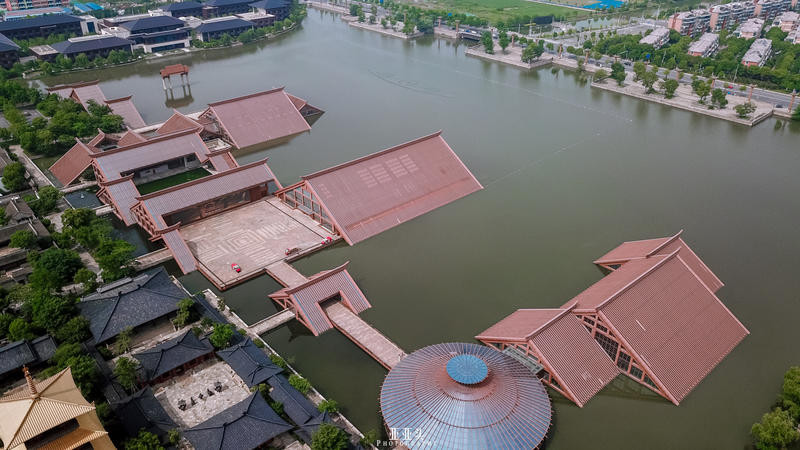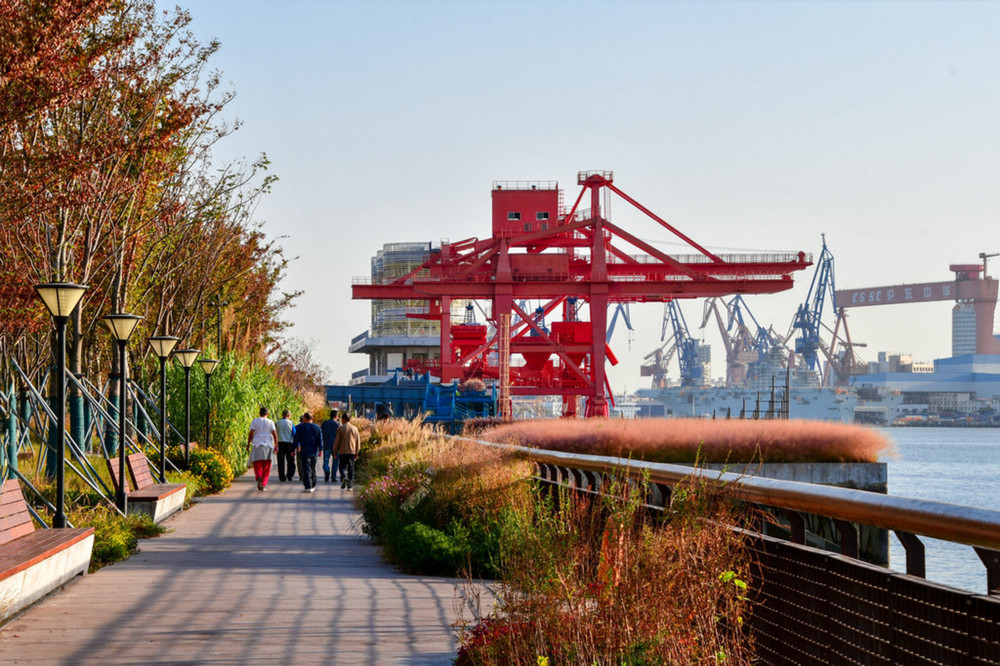Duration: 1 Day, Time: January, Companions: Family, Activities: Self-driving, Cultural Exploration, Free Walking, Hiking, Budget Travel, Weekend Trip. Published on April 8, 2022, at 23:31. Travel Location: Sichuan North Road Park, Hongkou District, Shanghai.
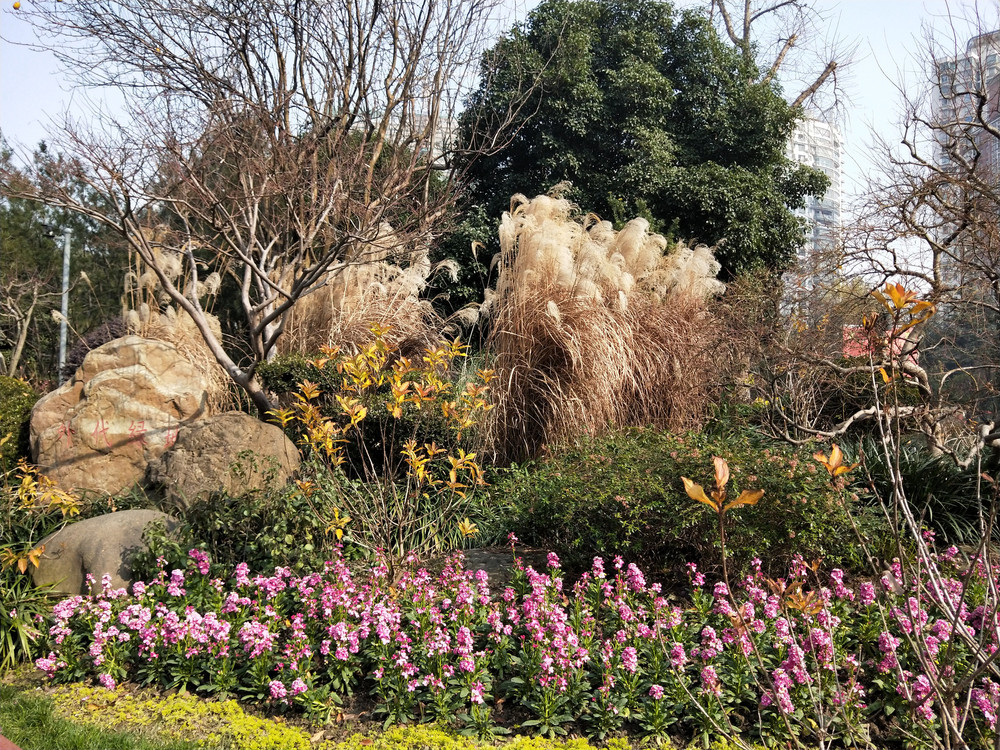
As we emerged from the building, directly across was an open park, so we decided to take a stroll inside. Initially, I thought this park, with a name that seemed so casually chosen, would not have much to offer. However, upon entering, I was pleasantly surprised to find that despite its modest size, it indeed had attractions worth seeing. The entrance was meticulously landscaped with beautiful violets and pansies. Complemented by rocks and large trees, it formed a rather impressive floral environment.
The park starts from Sichuan North Road in the west, ends at Dongbaoxing Road in the east, is adjacent to Hengshui Road in the south, and is bordered by Xingjiaqiao Road in the north. It is located in the bustling commercial area of Hongkou District, striving to create a landscape that returns to nature. Regardless of the surrounding skyscrapers that always pull one out of the natural greenery, the design concept centered around ‘green veins’, ‘water veins’, and ‘cultural veins’ was successful.
The small park is divided into seven major scenic areas, all with pleasant names: ‘Rainbow Dance Movement’, ‘Green Sound Piano Scales’, ‘Silver Plate Holding the Moon’, ‘Emerald Mist Forest’, ‘Jade Rainbow Peak’, ‘Orchid Osmanthus Fragrance’, and ‘Sunset Bamboo Grove’. In fact, as we walked along, it was difficult to match the scenic spots with these poetic names.
Surprisingly, the Memorial Hall of the Fourth National Congress of the Communist Party of China is located in a corner of the park. The basic exhibition area covers 1839 square meters and is a historical thematic museum that the society has retreated into. The main exhibition is divided into four parts: ‘Rising Storm’, ‘Historical Monument’, ‘Arousing the Workers and Peasants’, and ‘Red Hongkou’, with a total of 266 pieces (sets) of exhibits. Some of these exhibits were donated by the descendants of Chen Duxiu and the son of Luo Zhanglong, while others were collected by the staff of the Party History Office of the Hongkou District Committee of the Communist Party of China from across the country. Among them, the most important collection should be the ‘Resolutions and Manifesto of the Fourth National Congress of the Communist Party of China’.
The design of the memorial hall is distinctive, with elements of old Shanghai’s Shikumen architecture running through the entire exhibition line. As you tour through the Shikumen, it feels as if you are traveling back in time to old Shanghai. Shikumen is the most characteristic residential building in Shanghai. The old Shanghai alleys are generally Shikumen buildings, which absorb the style of Jiangnan residential buildings, with stone door frames and solid black lacquer thick wooden doors, pursuing a simple style.
Walking through the Shikumen and looking at the graphic materials on the walls, it seems as if you can see the scene of the Fourth National Congress of the Communist Party of China held in 1925, the original venue was a three-story brick and wood structure Shikumen residential building facing east. However, this residential building was destroyed in the ‘January 28th’ Songhu War in 1932. From January 11 to 22, 1925, the Fourth National Congress of the Communist Party of China was held at No. 8, Lane 28, Lane 254, Dongbaoxing Road, Hongkou District, today. The attending representatives included Chen Duxiu, Cai Hesen, Qu Qiubai, Lin Yonan, Zhuang Wengong, Chen Tanqiu, Li Weimin, Zhu Jin Tang, Fan Hong Jue, Li Yi, Ruan Zhang, Tan Pingshan, Xiang Ying, Zhou Enlai, Peng Shuzhi, Wang Shouhua, Li Lisan, Li Qi Han, Wang He Bo, Yin Kuan, and other 20 party members, representing 994 party members from various places. Vojtinsky, a representative of the Comintern, participated in the conference. Chen Duxiu presented a work report on behalf of the Third Executive Committee of the Central Committee of the Communist Party of China.
The Fourth National Congress of the Communist Party of China is of great significance in the history of the Chinese revolution. After this congress, the national anti-imperialist and anti-feudal workers’, peasants’, students’ and women’s movements developed rapidly. By the eve of the convening of the Fifth National Congress, the number of Party members across the country



